Physical Address
304 North Cardinal St.
Dorchester Center, MA 02124
Advances in pharmacotherapy and revascularization strategies have dramatically improved the short-term and long-term outcomes for patients with atherosclerotic coronary artery disease (CAD). At the same time, the worldwide incidence of atherosclerosis and CAD has also increased, largely driven by significant increases in obesity and type 2 diabetes mellitus. As a result, atherosclerotic CAD will remain a major public health issue for the foreseeable future.
Patients with atherosclerotic CAD can present to healthcare providers in many different ways. This chapter focuses on chronic stable angina. Other clinical presentations of atherosclerotic CAD (acute coronary syndromes [ACSs], congestive heart failure, sudden cardiac death, and cardiogenic shock) are described in separate chapters ( Chapter 20, Chapter 21, Chapter 24, Chapter 28, Chapter 29, Chapter 44 ).
In contrast to oxygen extraction by skeletal muscle, oxygen use by cardiac tissue is near maximal, even at rest ( Fig. 19.1 ). The heart responds to the need for increased cardiac output by increasing heart rate and contractility, both of which increase wall stress and myocardial oxygen requirements. This need for increased myocardial oxygen cannot be met by increasing the efficiency of oxygen extraction, and thus must be met by increasing coronary blood flow. If a significant flow-limiting epicardial stenosis is present, coronary blood flow is maintained by compensatory dilatation of the coronary bed beyond the obstruction. This diminishes coronary flow reserve and results in an inability to meet oxygen requirements as myocardial demand increases, creating a supply-demand mismatch. Symptoms of angina reflect myocardial ischemia and arise when the blood supply to a region of the heart cannot increase sufficiently to match myocardial oxygen demand. Ischemia can be elicited by treadmill or bicycle exercise testing (or using pharmacological vasodilator stress), and may be measured as loss of systolic thickening on echocardiography, diminished perfusion on SPECT, ST-segment depression on the surface ECG, and provocation of angina or its equivalent.
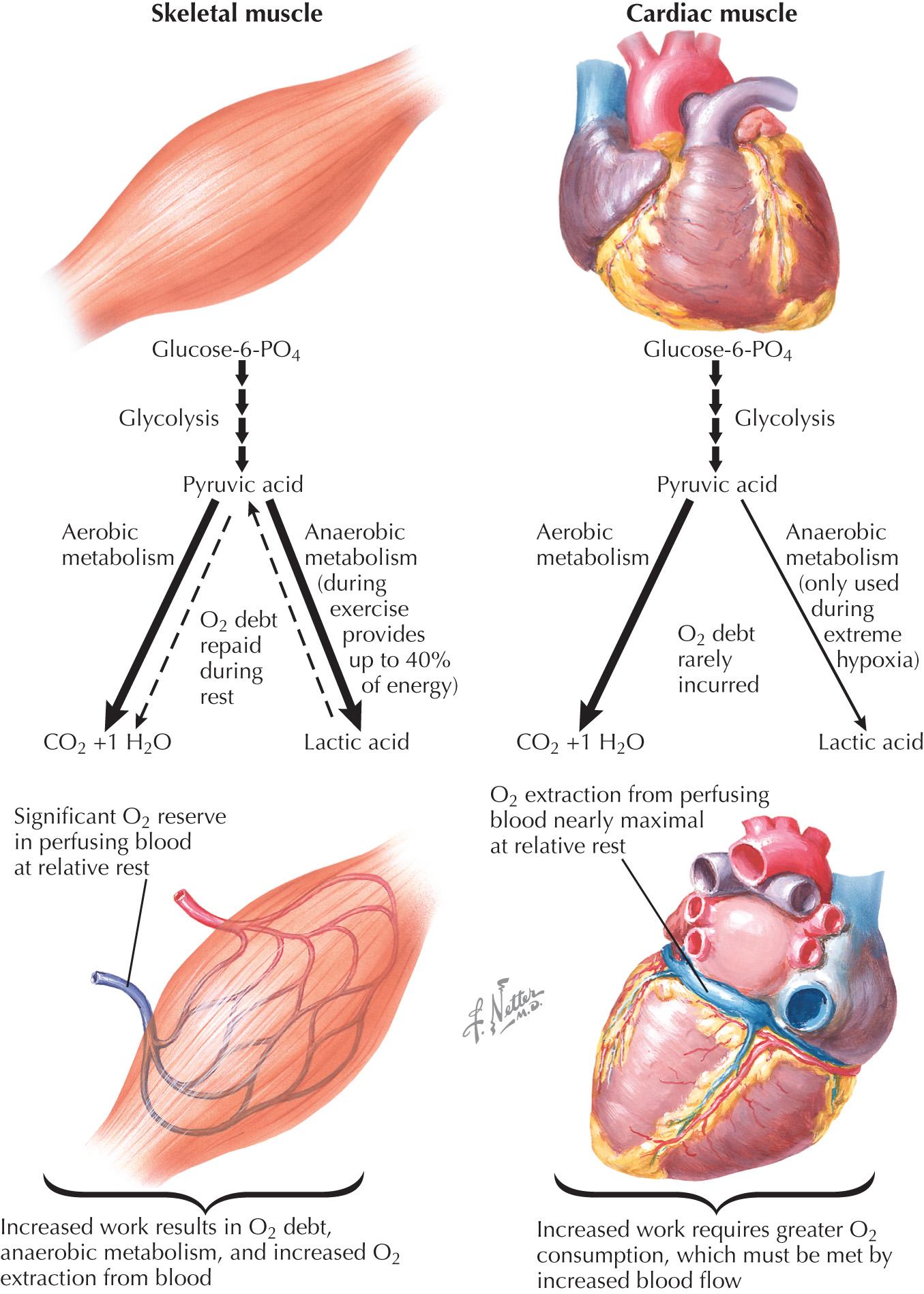
Increased vasoreactivity may also result in decreased myocardial blood flow with or without increased demand. Vasoreactivity seems to be responsible for some of the circadian, seasonal, and emotional components associated with angina. The other major biological mechanism that results in myocardial ischemia is sudden spontaneous rupture or erosion of an atherosclerotic plaque in a coronary artery, which results in sudden diminished blood flow and ACSs, as discussed in Chapters 20 and 21 .
Chronic stable angina is characterized by angina that occurs with increased oxygen demand. Symptoms can be provoked by exertion, heavy meals, or emotional distress. Symptoms tend to be reproducible and usually have been present over many months or longer. These symptoms most commonly result from fixed coronary stenoses ( Fig. 19.2 ). Chest discomfort is typically described as a pressure or tightness, or discomfort over the left precordium, although many individuals with myocardial ischemia do not manifest classic symptoms. The discomfort may radiate along the ulnar aspect of the left arm and is often accompanied by shortness of breath, nausea, and diaphoresis ( Fig. 19.3 ). Symptoms may also radiate or be isolated to the throat, jaw, interscapular region, and epigastrium. Radiation below the umbilicus and to the occiput is uncharacteristic, as are symptoms that are well localized to a fingertip, as provoked by palpation and movement, or relieved by lying down. Typically, stable anginal pain lasts for more than a few minutes and <10 minutes, is associated with exertion or other stresses, and is relieved by rest or the use of sublingual nitroglycerin within 1 to 2 minutes. Angina can occasionally be mistaken as indigestion, accounting for a delay in presentation or treatment. It is important to understand that atypical presentations of angina can occur in any patient but are more common in individuals with diabetes, women, and older adults. In these individuals, it is important to further evaluate any exertion-related symptoms that may reflect an inability to increase myocardial oxygen delivery, including significant dyspnea on exertion, new or worsened fatigue with exertion, or similar symptoms.
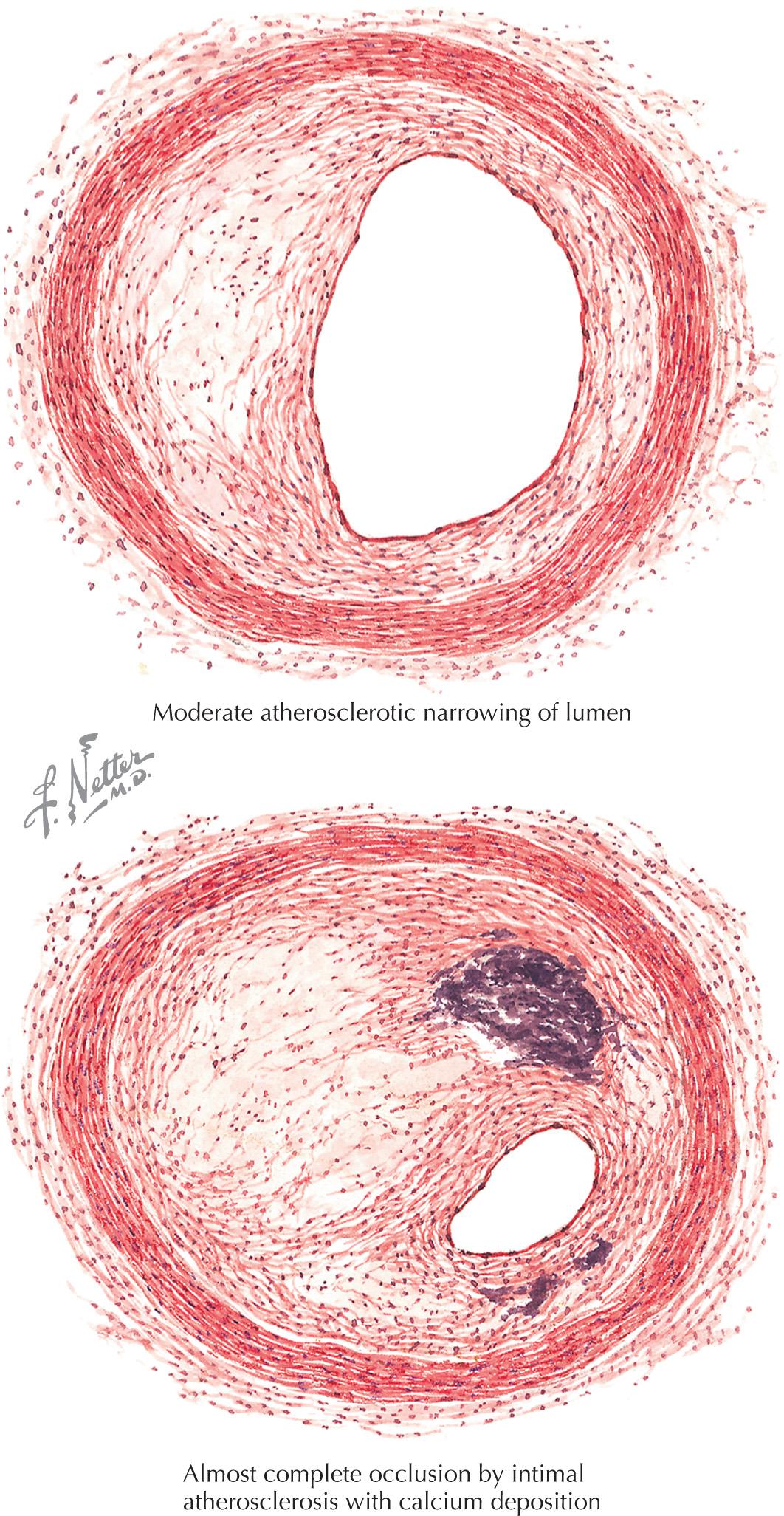
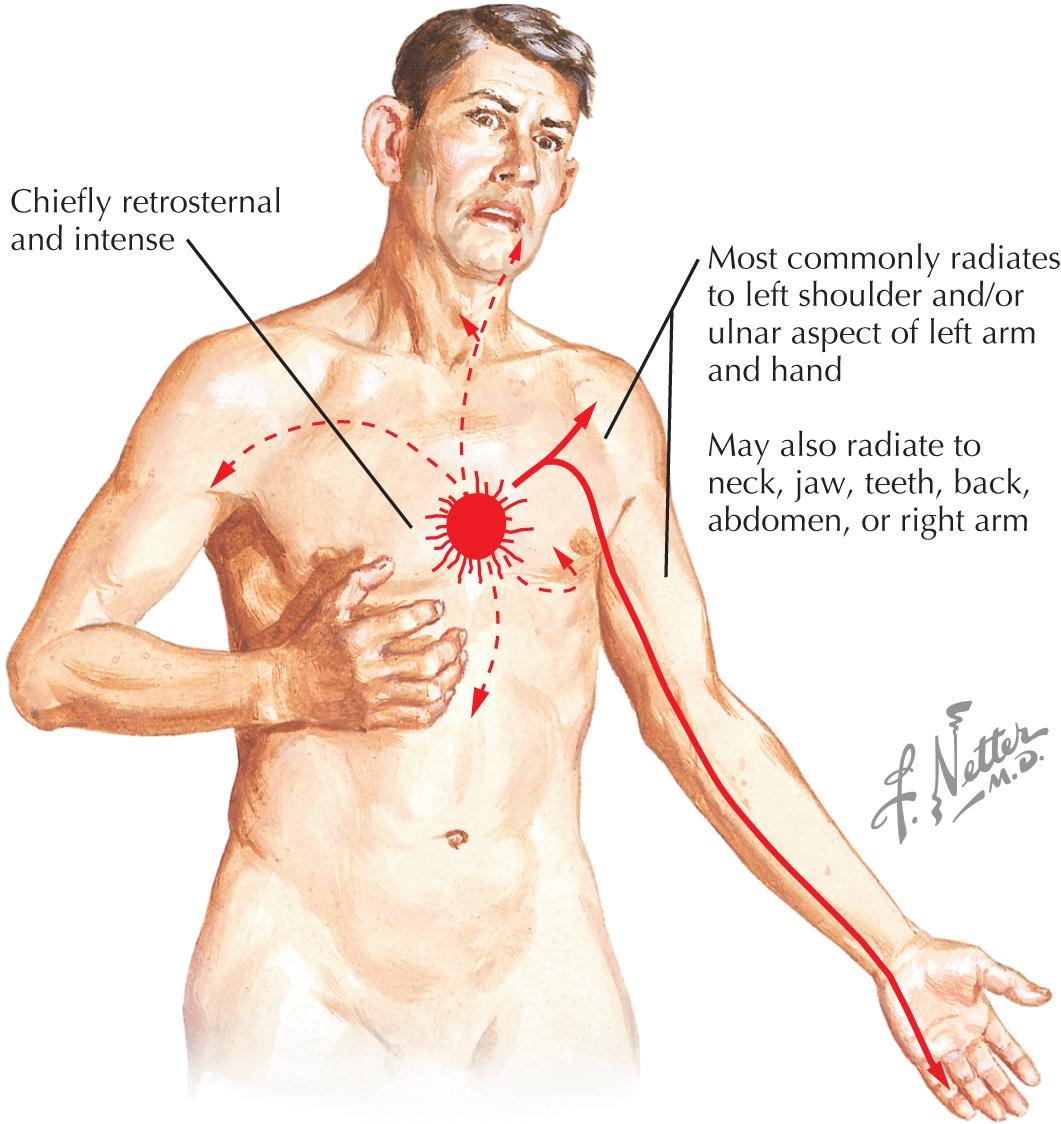
The quality of chest pain is similar to that experienced in the setting of acute unstable angina or acute myocardial infarction (MI). In that setting, it is usually more intense and prolonged, but the difference may be subjective. An important difference is that the pain associated with an acute MI is usually unremitting, although it may wax and wane in severity. Angina, or any symptoms that reflect a limitation of myocardial oxygen demand, may also reflect non–coronary artery etiologies, including severe aortic valve stenosis, hypertrophic cardiomyopathy, and microvascular dysfunction. Other cardiovascular causes of chest pain to be considered include pericarditis, aortic dissection, and pulmonary embolism. These may be difficult to distinguish from angina based on the history and physical examination, and often require further diagnostic evaluation. The most common noncardiac causes of angina-like pain are gastrointestinal conditions, such as gastroesophageal reflux disease, esophageal spasm, peptic ulcer disease, biliary disease, and pancreatitis. Of these, gastroesophageal reflux disease is most commonly encountered. Pleuritis or chest pain related to other lung pathology may also present in this manner. Cervical disk disease, costochondral syndromes, and shingles may also mimic angina. Chest discomfort is also a common manifestation in patients with panic disorder, but this remains a diagnosis of exclusion.
Because the mortality and morbidity associated with CAD is higher than many noncardiac causes of angina-like symptoms, it is important to be thorough and thoughtful before dismissing CAD as the underlying cause of symptoms of an individual.
A history suggestive of angina mandates diagnostic and prognostic evaluations. The urgency of treatment is guided by the initial presentation and clinical evaluation. A history of new-onset angina, accelerating angina, angina at a low exertional threshold, and angina at rest are indicators for instability and warrant urgent attention. In individuals with previously stable angina, it is important to evaluate noncardiac causes of increased oxygen demand (anemia, hyperthyroidism, severe emotional stress, and so on) as a potential inciting agents. Physical examination during a routine consultation is unlikely to be rewarding, but the clinician should look for clinical evidence of left ventricular (LV) dysfunction (resting tachycardia, laterally displaced apical impulse, an LV S 3 , rales, jugular venous distention, positive hepatojugular reflex, pedal edema). In addition to evaluating the status of traditional cardiac risk factors (hypertension, smoking status, hyperlipidemia, diabetes), it is important to inquire about a history of claudication, stroke, and transient ischemic attack, and carefully screen for manifestations of atherosclerotic disease (audible bruits, asymmetrical pulses, palpable aneurysms, ankle-brachial index). The presence of atherosclerosis in any of these areas heightens the likelihood of underlying CAD. The examiner should also look for physical and biochemical signs of the metabolic syndrome ( Box 19.1 ), as well as stigmata of hereditary hyperlipidemic conditions ( Fig. 19.4 ).
Abdominal obesity
Men >102 cm (>40 in)
Women >88 cm (>34.5 in)
Blood pressure >130/85 mm Hg
Fasting glucose >110 mg/dL
HDL-C
Men <40 mg/dL
Women <50 mg/dL
Triglycerides >150 mg/dL
HDL-C , High-density lipoprotein cholesterol.
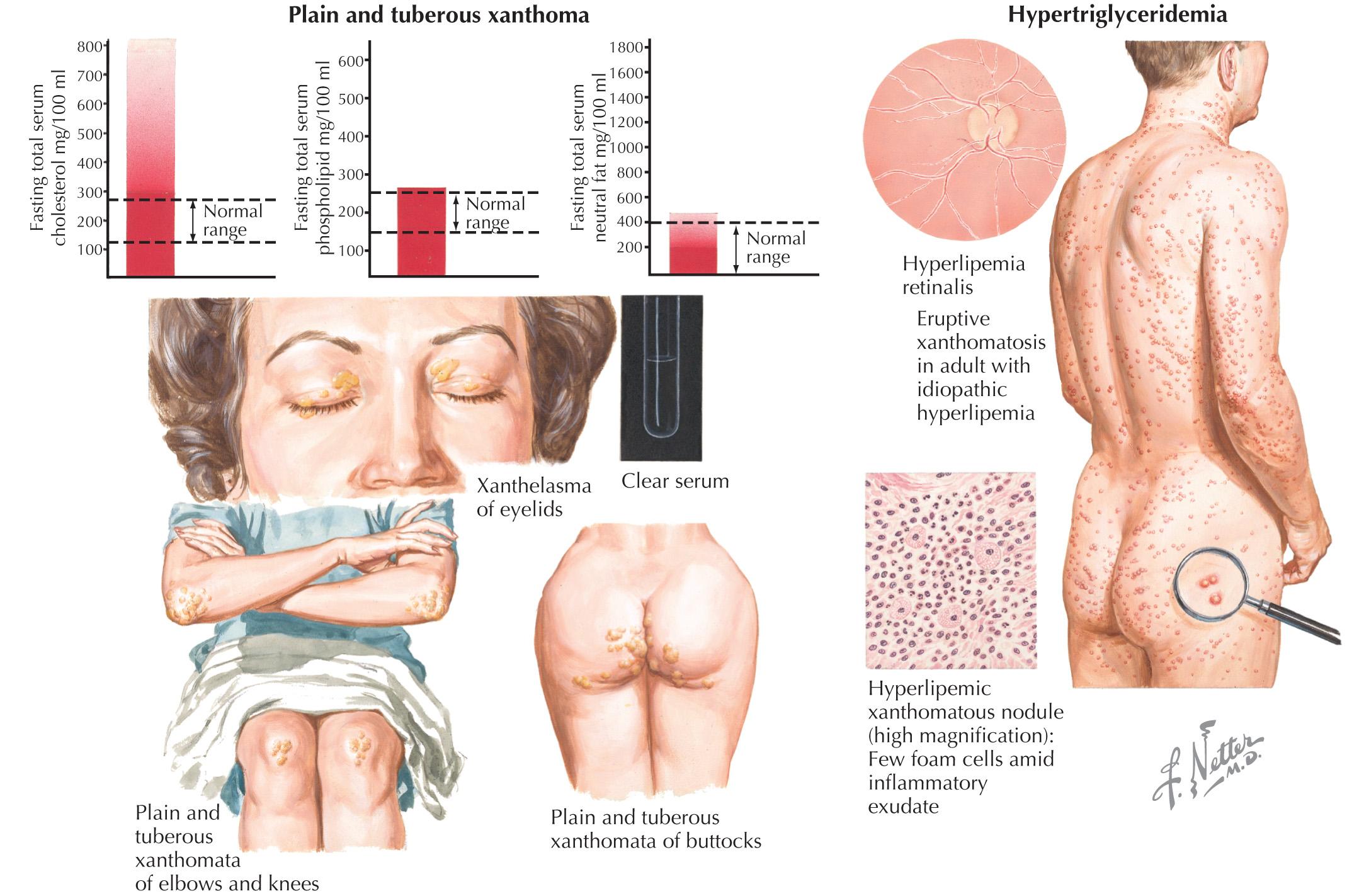
The next steps in the diagnostic approach should be based on the pretest likelihood of disease. The interplay of traditional risk factors and genetic traits affects the development of atherosclerosis ( Fig. 19.5 ). Patients with typical angina, multiple risk factors, and/or impaired LV function with a high likelihood of disease should be considered for diagnostic coronary angiography. Patients with a low pretest likelihood of disease and obvious noncardiac etiology should be reassured, without further additional cardiac testing, and provided appropriate consultation.
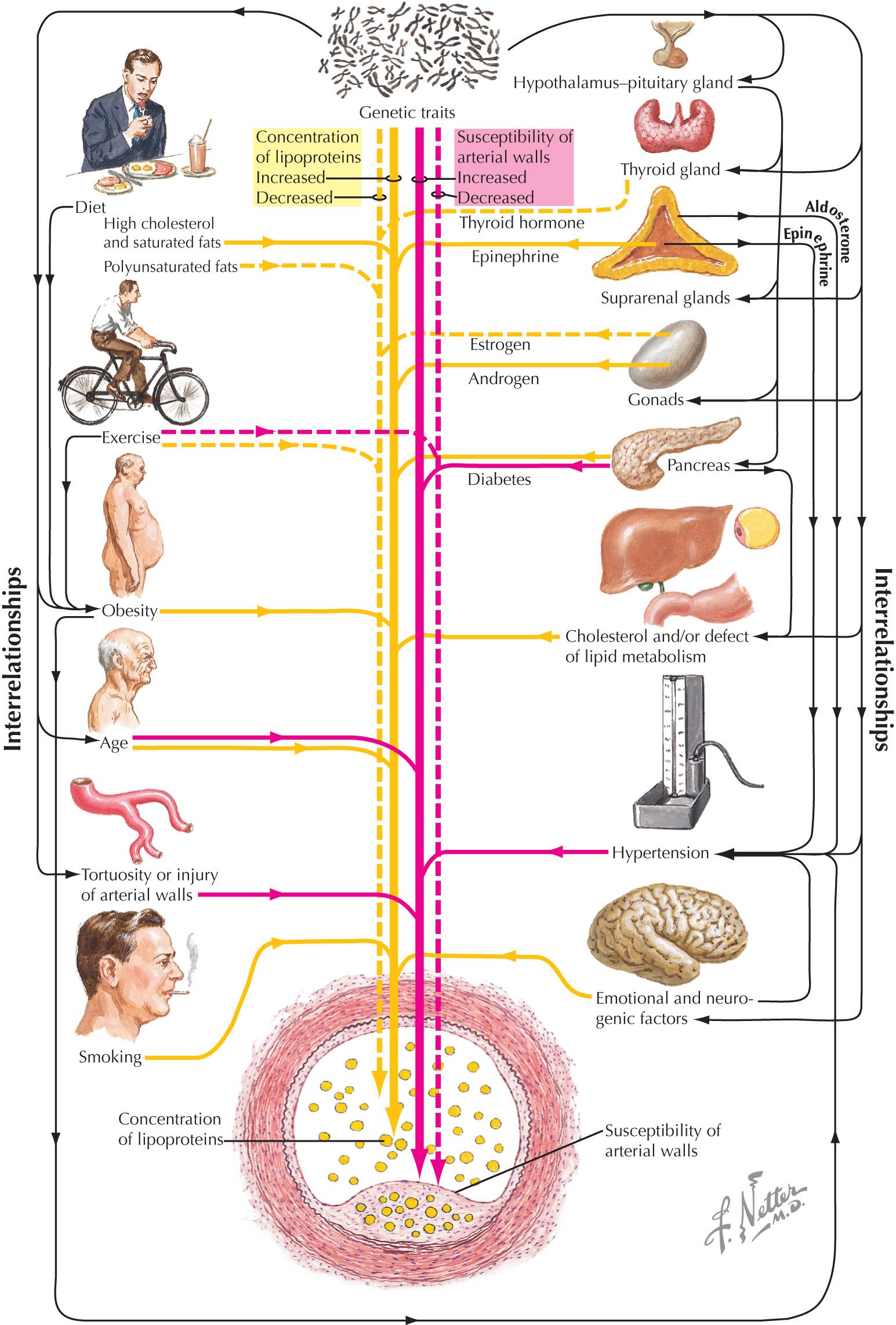
Rather than falling into the high-risk or low-risk categories, most patients have an intermediate likelihood of epicardial CAD. In these individuals, stress testing is useful for further risk stratification ( Fig. 19.6 ). Patients with a normal resting ECG may be referred for standard exercise treadmill testing. However, as discussed elsewhere ( Chapter 10 ), the diagnostic accuracy of exercise stress testing is limited. For this reason, evaluation with concomitant nuclear perfusion and/or stress echocardiographic imaging studies is often preferred. It should be noted that the inability to perform adequate exercise by itself is a major indicator of adverse prognosis. This subset of patients may be referred for pharmacological stress testing with SPECT, PET, or MRI. Alternatively, CT angiography for anatomic definition may also be considered in middle-aged individuals when active CAD is suspected and renal dysfunction is not an issue.
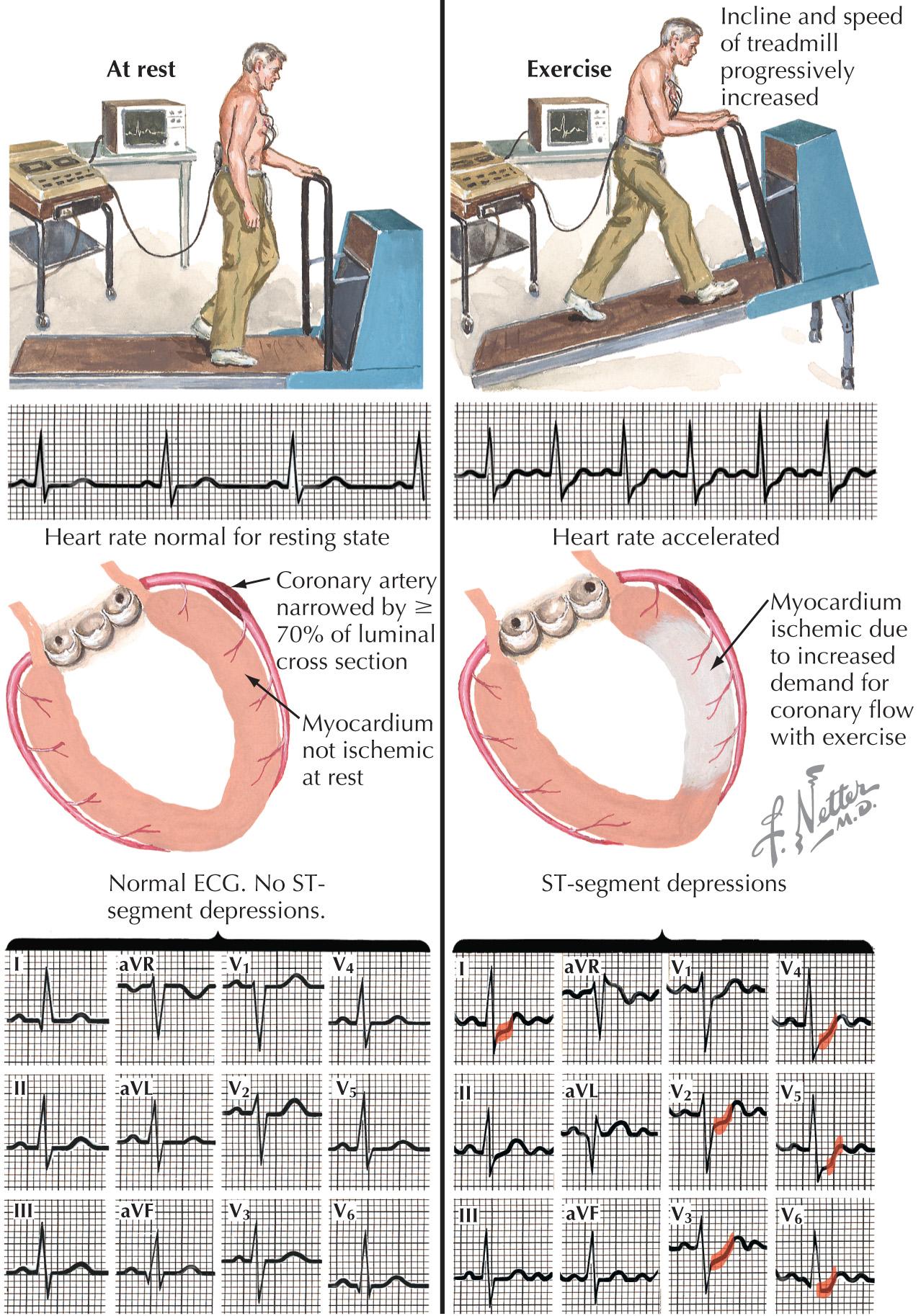
Patients with typical symptoms and/or high pretest probability of disease should be referred for diagnostic coronary angiography. Subjects with severe segmental LV dysfunction and absence of inducible ischemia should be evaluated to determine whether the myocardium is scarred or viable. Low-dose dobutamine echocardiography, thallium-dipyridamole imaging, PET, and MRI may all be used to assess viability. Evidence of viability should lead to referral for angiography, with the goal of attempting revascularization whenever feasible. Patients with low-risk findings on noninvasive testing may be treated medically with risk counseling and adequate follow-up.
Become a Clinical Tree membership for Full access and enjoy Unlimited articles
If you are a member. Log in here